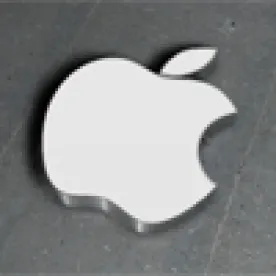You don't get two bites at the apple, it is sometimes said, but Apple Inc. is getting a second bite at defending itself against a massive damages award after the Federal Circuit Court of Appeals vacated a $368 million jury verdict in a patent infringement case.
The court vacated the award because it found that the plaintiff’s damages expert improperly relied on a model known as the Nash Bargaining Solution to calculate reasonable royalty damages.
Federal district courts have split on whether to allow expert testimony using the Nash Bargaining Solution, but the Federal Circuit held that the expert failed to establish the tie between the Nash theorem and the facts of this case.
The underlying issue in the case was whether two of Apple's products — FaceTime, which allows secure video calling between Apple devices, and VPN On Demand, which creates a virtual private network from an iOS device — infringed four patents owned by VirnetX, a Nevada software and licensing company.
A jury in federal court in Tyler, Texas, concluded that all four patents were valid and that Apple had infringed them. It awarded VirnetX damages of $368 million.
Proving Reasonable Royalties
On appeal, the Federal Circuit upheld the jury's verdict of infringement with regard to the VPN On Demand product but reversed and remanded aspects of the infringement verdict with regard to the FaceTime product.
The court then turned its attention to Apple's challenges of the testimony of VirnetX's damages expert. In a patent case, when infringement is found, a court is to award damages "adequate to compensate for the infringement, but in no event less than a reasonable royalty for the use made of the invention by the infringer."
To establish a reasonable royalty rate in this case, VinetX's expert offered three alternative methods of calculation. Apple challenged the admissibility of all three methods under Daubert, but over Apple's objection, the trial court admitted the testimony.
On appeal, however, the Federal Circuit found problems with all three theories.
Smallest Salable Unit
The expert's first theory was to apply a one percent royalty rate to the base. He derived the one percent rate from the royalty VirnetX typically sought in licensing its patents. For the base, he used what he called the "smallest salable unit" — the lowest sale price of each model of the iOS devices that contained the challenged features. With this theory, he calculated the total damages to be $708 million.
Apple argued that the expert erred by using the entire market value of its products as the royalty base without demonstrating that the patented features drove the demand for those products. The Federal Circuit agreed.
"The law requires patentees to apportion the royalty down to a reasonable estimate of the value of its claimed technology, or else establish that its patented technology drove demand for the entire product," the court explained. "VirnetX did neither."
The court went on to say that the expert "did not even try to link demand for the accused device to the patented feature, and failed to apportion value between the patented features and the vast number of nonpatented features contained in the accused products."
The Nash Bargaining Solution
For both the expert's second and third theories — each of which he used only with regard to FaceTime — he relied on the Nash Bargaining Solution, a so-called game theory developed in 1950 by John Nash, a mathematician and co-winner of the 1994 Nobel Prize in economics.
In his first use of the Nash theorem, the expert began by calculating the profits associated with the use of FaceTime. He did this based on the revenue generated by Apple's addition of a front-facing camera on its mobile devices. He then determined that, under the Nash theory, the parties would have split this revenue 50/50. However, after accounting for Apple's stronger bargaining position, he concluded that Apple would have taken 55 percent of the profits and VirnetX, 45 percent. That amounted to $588 million in damages.
For his second use of the Nash theorem, the expert assumed that FaceTime "drove sales" for Apple's iOS products. Eighteen percent of all iOS sales would not have occurred without the addition of the FaceTime feature, he concluded. Based on that, he calculated the amount of Apple's profits that he believed were attributable to FaceTime and apportioned 45 percent of those profits to VirnetX. That amounted to $606 million in damages for FaceTime.
Apple challenged both these theories, arguing that the expert's use of the 50/50 split as a starting point was akin to the 25 percent rule of thumb for royalties that the Federal Circuit had rejected in earlier cases. Here again, the Federal Circuit agreed with Apple's argument.
The problem, the court explained, is that the Nash theorem arrives at a result that follows from a certain set of premises. Here, the expert never tied his use of the theorem to the facts of the case.
"Anyone seeking to invoke the theorem as applicable to a particular situation must establish that fit, because the 50/50 profit-split result is proven by the theorem only on those premises," the court said. In this case, the expert never did that.
Based on these conclusions, the court vacated the damages award and sent the case back to the district court for further proceedings.
Has an expert ever used the Nash Bargaining Solution, or other game theory, in one of your cases? If so, was the result positive?




 />i
/>i

